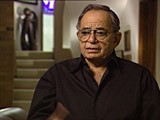You searched for: poland
<< Previous | Displaying results 1351-1400 of 1568 for "poland" | Next >>
-
Sabina Szwarc
ID CardSabina grew up in a Jewish family in Piotrkow Trybunalski, a small industrial city southeast of Warsaw. Her family lived in a non-Jewish neighborhood. Her father was a businessman and her mother was a teacher. Both Yiddish and Polish were spoken in their home. In 1929 Sabina began public school, and later went on to study at a Jewish secondary school. 1933-39: On September 1, 1939, Germany invaded Poland. Four days later, German troops streamed into Sabina's city. After one month of occupation, her father…
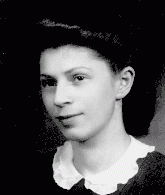
-
Miso Vogel
ID CardMiso came from a religious family in a small village in Slovakia, where his father was a cattle dealer. He was the eldest of five children. When Miso was 6 his family moved to Topol'cany, where the children could attend a Jewish school. Antisemitism was prevalent in Topol'cany. When Miso played soccer, it was always the Catholics versus the Jews. 1933-39: In 1936 Miso had his bar mitzvah and was considered a man. His grandparents traveled 50 miles for it; he was so happy they were all together. In March…
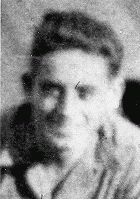
-
Paula Garfinkel
ID CardPaula was one of four children born to a religious Jewish family in Lodz, an industrial city with a large Jewish population. As a child, Paula attended public schools and was tutored at home in Jewish studies three times a week. Her father owned a furniture store. 1933-39: Paula, her brothers, and sisters spent a lot of time at the clubhouse of their Zionist group, Gordonia. Their group believed in humanistic values, Jewish self-labor, and in building a Jewish homeland in Palestine. Paula liked to work…
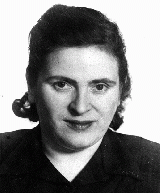
-
Benjamin Bornstein
ID CardBenjamin and his younger brother Zigmush were born to Jewish parents in the industrial city of Lodz. Lodz was Poland's second biggest city before the war, and one-third of its inhabitants were Jewish. Benjamin's father, Moshe, owned a candle factory, and his mother, Brona, was a nurse. 1933-39: In 1939, as Benjamin began the third grade, the Germans occupied Lodz. Jews were forbidden to ride buses, and were ordered to wear yellow stars. Because the Germans sometimes grabbed Jews off the streets for forced…
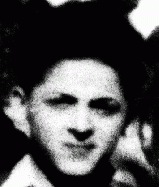
-
Berta Rivkina
ID CardBerta was the youngest of three girls born to a Jewish family in Minsk, the capital of Belorussia. Before World War II, more than a third of the city was Jewish. Berta's father worked in a state-owned factory building furniture, an occupation in which several of his relatives also made a living. 1933-39: Berta and her family lived on Novomesnitskaya Street in central Minsk, only a few blocks from the Svisloch River. Her older sister, Dora, loved to swim there in the summer. By the time Berta was in the…
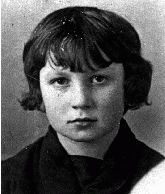
-
Arthur Menke
ID CardArthur was born to a Jewish family in Germany's largest port city, Hamburg. His father owned a small factory that manufactured rubber stamps. In the early 1930s, Hamburg was home to the fourth largest Jewish community in Germany, which had numerous social and cultural institutions. 1933-39: By 1935 conditions for Hamburg's Jews were bad. Arthur's family was moved to another part of town and in 1938, the Nazis seized his father's business. On national holidays many German citizens unfurled red, white and…
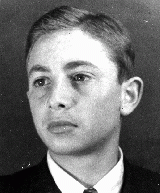
-
Blimcia Lische
ID CardBlimcia's parents were religious Jews. Her father, Shaya David, and her mother, Malcia Saleschtz, had settled in Kolbuszowa, where Blimcia's mother had been raised. There, Malcia's father bought the newlyweds a home and started his new son-in-law in the wholesale flour business. 1933-39: Blimcia was born in 1938, and was raised among many aunts, uncles and cousins. Around Blimcia's first birthday, Germany invaded Poland and soon reached Kolbuszowa. Polish soldiers on horses tried to fight against the…

-
Frederik Polak
ID CardFrederik was raised in a religious Jewish home. His father was a scribe of Jewish holy texts. Frederik studied accounting and became a certified public accountant. After his father died, he helped support his three sisters, his blind brother and his mother. When he was in his mid-20's, Frederik married and started his own family. 1933-39: Creating an atmosphere of Jewish observance in the home was important to Frederik and his wife. They loved to celebrate the Sabbath and the Jewish holidays with their…
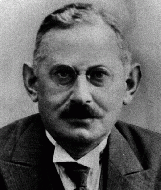
-
Erna Schumer Unger
ID CardErna was the second of four daughters. Her religious Jewish parents moved the family to Essen, Germany, in 1905 when Erna was 21. Erna married when she was in her twenties, but the couple had no children and her husband passed away. After living as a widow for some years, Erna remarried to Jacob Unger, a salesman, and together they had two children, Max and Dora. 1933-39: When Hitler became chancellor of Germany in 1933, Jacob went to Amsterdam to explore the possibility of the family settling there.…
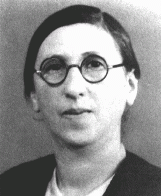
-
Szlamach Radoszynski
ID CardSzlamach was one of six children born to Yiddish-speaking, religious Jewish parents. Szlamach's father was a peddler, and the Radoszynski family lived in a modest apartment in Warsaw's Praga section on the east bank of the Vistula River. After completing his schooling at the age of 16, Szlamach apprenticed to become a furrier. 1933-39: During the 1930s Szlamach owned a fur business. Despite the Depression, he was hoping the economy would turn around so that he could make enough money to move into his own…

-
Gabrielle Weidner
ID CardGabrielle was the second of four children born to Dutch parents. Her father was a minister in the Seventh-Day Adventist Church. She grew up in Collonges, France, near the Swiss border, where her father served as a pastor. Gabrielle was baptized in the Seventh-Day Adventist faith at the age of 16. She attended secondary school in London, England. 1933-39: Gabrielle became increasingly active in the Seventh-Day Adventist Church, eventually becoming the secretary at the French-Belgian Union of Seventh-Day…

-
Agnes Mandl
ID CardWhen Agnes was a teenager, she attended Budapest's prestigious Baar Madas private school, run by the Hungarian Reformed Church. Although she was the only Jewish student there, Agnes' parents believed that the superior education at the school was important for their daughter. Agnes' father, a textile importer, encouraged his daughter to think for herself. 1933-39: In 1936 Agnes studied educational techniques with Signora Maria Montessori in Italy and earned a diploma so she could teach. Hoping to improve…
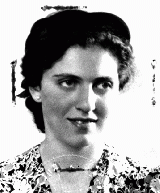
-
Schloma Wolf (Willy) Szapiro
ID CardBorn to a Jewish family, Willy left Poland at age 20 and emigrated to Palestine. He became active in the workers' organization to end the British mandate there. His activities led to his arrest on May 1, 1931. After serving a two-year prison sentence, Willy was expelled from Palestine. 1933-39: In 1933 Willy left Palestine for Austria, where he joined the ranks of the workers' movement. The economic depression in Austria gave momentum to the movement's cause, and Willy and his friends were closely watched…
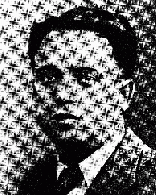
-
Michael von Hoppen Waldhorn
ID CardMichael was born in a village in the southeastern part of Galicia, an Austrian province before it became a part of Poland in 1918. Raised by Jewish parents, Michael served as an officer in the Austro-Hungarian army until the end of World War I. After the war, Michael and his Hungarian-Jewish wife settled in Paris, where he became known as Michel. They raised three children there. 1933-39: Michael's family was better off in Paris than they had been in eastern Europe. In Paris, Michael was a successful…

-
Leo Hanin
ID CardLeo's Jewish family lived in Vilna, which in 1913 was part of the Russian Empire. In 1916, fearing revolution, his family left for Harbin in northern China, a city with a well-organized Jewish community. There Leo joined a Zionist group and studied Jewish history, and for two years attended a Jewish primary school and learned Hebrew. He then studied at a Russian secondary school in Harbin. 1933-39: When Japan occupied Manchuria in 1931 and conditions in Harbin deteriorated, Leo's parents sent him to…
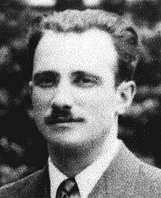
-
Michel Margosis
ID CardMichel's parents were Russian-born Jews. His father had been a police official in Russia who had been deported to Siberia for being an outspoken Zionist. After escaping, he and his wife had made their way to Belgium, and two of their four children, including Michel, were born in Brussels. 1933-39: In Brussels Michel's father owned and edited two newspapers, one French and one Yiddish. As a kid, Michel enjoyed reading comics like "Yordi," who in the United States is known as Superman. A day after his…
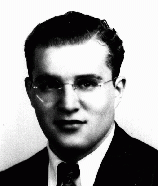
-
Monique Jackson
ID CardMonique's Jewish parents met in Paris. Her father had emigrated there from Russia to study engineering, and her mother had come from Poland as a young child. Monique's father did not have enough money to finish university, so he went to work as an upholsterer. He also shared a small business which sold his hand-tooled leather purses. 1933-39: Monique's mother was 20 when she gave birth to Monique in 1937. Two years later, Parisians were threatened by the possibility of bombing by the Germans, and French…

-
Chaje Isakovic Adler
ID CardThe youngest of 11 children, Chaje was raised by religious, Yiddish-speaking Jewish parents in a village in Czechoslovakia's easternmost province. At the age of 12, she was apprenticed to a men's tailor. In the 1920s she married Jermie Adler from Selo-Solotvina. Together, they moved to Liege, Belgium, where they raised three daughters and she continued to work as a tailor. 1933-39: Chaje's customers called her the "Polish tailor." Raising her children as Jews in the largely Catholic city of Liege did not…
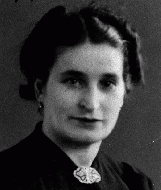
-
Judith Margareth Konijn
ID CardJudith was the younger of two children born to religious, middle-class Jewish parents. Judith's mother, Clara, was Sephardic, a descendant of Jews who had been expelled from Spain in 1492. Her father, Lodewijk, was a traveling representative for a firm based in Amsterdam. The family lived in an apartment in a new section of Amsterdam on the southern outskirts. 1933-39: Judith attended grade school with her cousin Hetty who was the same age. Judith loved to study. Her mother taught piano to students who…
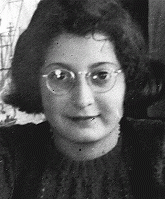
-
Hilde Verdoner-Sluizer
ID CardHilde was raised in a middle-class Jewish family in Amsterdam. Like many of the Netherlands's Jews, Hilde's family was well-integrated in Dutch society. Hilde excelled in high school, especially in languages. After graduation, she studied homemaking for two years, and then took a job as a secretary in Rome. Hilde returned to Amsterdam where, at 24, she married Gerrit Verdoner in December 1933. 1933-39: After their wedding, Hilde and Gerrit moved to Hilversum, a residential town in the heart of the…
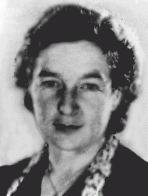
-
Golda (Olga) Bancic
ID CardOlga was born to a large Jewish family living in the Bessarabia province when it was still part of the Russian Empire. In 1918 the province was annexed by Romania. When Olga was 12 years old, she was arrested for the first time for having participated in a strike at the mattress factory where she worked. Despite her youth, she was put in prison and beaten. 1933-39: Olga was an active and vocal member of the local workers' organization. She had been arrested and imprisoned so often that she simply…
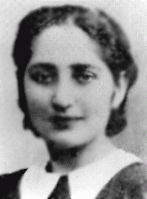
-
Channah Mazansky-Zaidel
ID CardChannah was one of six children born to a Jewish family. In 1914, a year after her father died, the family fled during World War I to Russia. After the war they returned to Lithuania and settled in the village of Pampenai in a house owned by Channah's grandparents. When Channah's three oldest siblings moved to South Africa in the 1920s, Channah helped support the family by sewing. 1933-39: Channah was working as a seamstress in Pampenai when, in the mid 1930s, she met and married Channoch Zaidel. The…
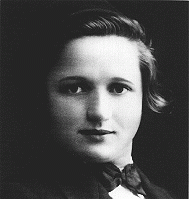
-
Sara Galperin
ID CardSara, born Sara Bernstein, was one of six children in a Jewish family in the Lithuanian village of Karchai. Her father was a farmer. Sara attended secondary school in Jonava and in 1920 she moved to Siauliai, where she met and married Pinchas Galperin. The couple owned and ran a dairy store, selling butter, milk and cheese. They had three children--two sons and a daughter. 1933-39: In addition to running the family store and rising early every morning to buy dairy products from the local farmers, Sara was…
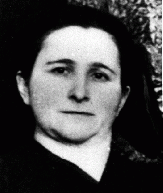
-
Nesse Galperin
ID CardNesse was born to an observant Jewish family in Siauliai, known in Yiddish as Shavl. Her parents owned a store that sold dairy products. The city was home to a vibrant Jewish community of almost 10,000 people. It had over a dozen synagogues and was renowned for its impressive cultural and social organizations. 1933–39: Nesse's family was very religious and observed all the Jewish laws. She attended Hebrew school and was raised in a loving household, where the values of community and caring always were…
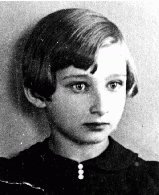
-
Nazi Racism
ArticleNazi racism and racial antisemitism ultimately led to mass murder and genocide. Learn more about Nazi racial ideology.
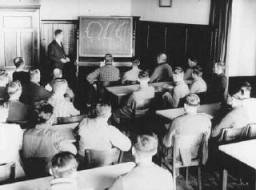
-
Yakov Biber
ID CardYakov was the youngest of four children born to a poor religious Jewish family in the village of Matsiov in Ukraine. Six years after Yakov was born, Matsiov was ceded to Poland. When Yakov was 14 his mother died and he had to quit school in order to work. Yakov was a Zionist and hoped to settle in Palestine [Yishuv]. 1933-39: In the Young Pioneers, a Zionist group, Yakov directed the dramatic productions the group put on to raise money for the Zionist cause. It was in the Young Pioneers that he met Chava,…
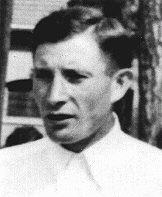
-
Barbara Nemeth Balint
ID CardBarbara was born to a middle-class Jewish family in southeast Hungary. Her father had a store that carried grocery and hardware items. Barbara had a sister named Margit and a brother named Desider. In 1928 Barbara married Istvan Geroe and moved to the town of Torokszentmiklos. Her son, Janos, was born there a year later. 1933-39: In 1933 Barbara divorced and returned with 3-year-old Janos to her parents' home in the town of Szentes. She helped run her parents' store, which was located on a busy inter-city…
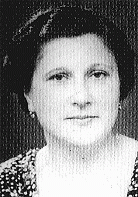
-
Jermie Adler
ID CardThe second of seven children, Jermie was born to poor, religious Jewish parents at a time when Selo-Solotvina was part of Hungary. Orphaned as a young boy, he earned a living by working at odd jobs. In the 1920s he married a woman from his village. Together, they moved to Liege, Belgium, in search of better economic opportunities. There, they raised three daughters. 1933-39: In Liege the Adlers lived in an apartment above a cafe, and Jermie and his wife ran a successful tailoring business. Their children…
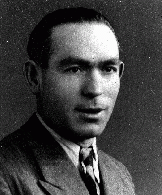
-
Sophie Weisz
ID CardSophie was born to a prosperous Jewish family in a village near the Hungarian border known for its winemaking and carriage wheel industries. The village had many Jewish merchants. Her father owned a lumber yard. Sophie loved to dance in the large living room of their home as her older sister, Agnes, played the piano. 1933-39: Sophie's father believed in a Jewish homeland and sent money to Palestine to plant trees and establish settlements there. When she was 10, she was sent to a school in nearby Oradea…
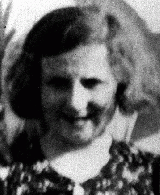
-
Isachar Herszenhorn (Irving Horn)
ID CardIsachar was born to a Jewish family in the Polish city of Radom, approximately 75 miles south of Warsaw. The city was the center of Poland's leather-tanning industry. Isachar's father worked as a salesman for a nearby tanning factory. His father was a successful salesman and the family lived comfortably. 1933-39: During registration for Isachar's first-grade class in 1934, a Jewish boy was pushed down the stairs. When his mother confronted the principal about the incident, all he said was that the boy had…

-
Janina Prot
ID CardJanina's parents had converted from Judaism to Catholicism in the 1920s. When Janina was 4 years old, her parents divorced; Janina left Warsaw and went to live with her father near the Polish town of Radom, while her brother Tomas remained in Warsaw with his mother. Janina, or Jana as she was affectionately known, loved to read. 1933-39: When Jana was 12 she moved back to Warsaw to attend secondary school, and stayed with her mother. A year later, on September 8, 1939, the Germans were bombing Warsaw.…

-
Gert Laske
ID CardGert was born to a Jewish family settled in northeast Berlin, known as one of the city's "red" (largely communist) districts. They lived in a large tenement building. Gert's parents were from the eastern part of Germany, which had been ceded to Poland in 1919. His father, proud of his Iron Cross, Second Class, earned in World War I, was active in an association of Jewish veterans. 1933-39: After Hitler came to power, a neighbor told Gert's mother that they couldn't greet each other on the street…

-
Frieda Greinegger
ID CardFrieda was the fourth of five children born to strict Catholic parents. She had one brother and three sisters. Frieda grew up on a large farm near the village of Michaelnbach in northern Austria. The farm had cattle, horses, pigs and poultry, and the children worked long hours helping their parents on the farm. At age 12, Frieda left school to work full time on the farm. 1933-39: Germany annexed Austria in March 1938. When war broke out in September 1939, Frieda's brother was drafted into the German army.…
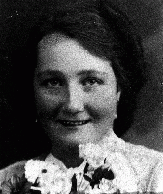
-
Iosif Kirzhner
ID CardIosif was the second of four boys born to a Jewish family in the southern Ukrainian port of Odessa, a city with the largest Jewish community in the Soviet Union before World War II. Iosif's father worked as a hat maker, while his mother raised the family. 1933-39: In 1936 Iosif joined the Red Army and was trained to drive a tank. After Germany invaded Poland on September 1, 1939, the Soviet Union took advantage of its nonaggression pact with the Germans to claim Finnish territory. The Finns resisted them…

-
Frederic Bernard
ID CardFrederic was born to a Jewish family in Czernowitz (Chernovtsy). His father was head clerk in a lawyer's office and his mother was a pianist. Frederic's parents were active in Czernowitz's sizable Jewish community. In 1930 Frederic began medical studies at the German University in Prague, Czechoslovakia. 1933-39: Frederic left Prague in 1933. He went to France and then Italy to finish his studies and graduated in 1936. He wanted to leave Europe to escape Hitler and tried to do so by applying to the…
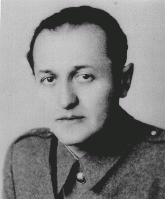
-
Genya Rotenberg
ID CardGenya and her brother, Nahum, were raised by Jewish parents in Lodz, Poland's second-largest city and an industrial center. Before the war, one-third of Lodz's inhabitants were Jewish. Genya's parents placed emphasis on their children's education. 1933-39: In 1939, when Genya was 9, the Germans occupied Lodz. After that, it was forbidden for "Jews, Gypsies and dogs" to be in public places. Since Jews weren't allowed to go to school, her parents arranged to tutor her secretly at home, but she couldn't keep…
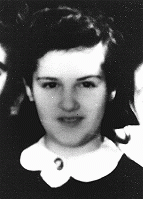
-
Bernard Krakauer
ID CardBernard was one of seven children born to a German-speaking, Jewish family in the small Moravian town of Mikulov in the central part of Czechoslovakia. The family later moved to the town of Hodonin where Bernard opened a dry-goods and clothing store. In 1899 he married Berta Koselova, and the couple had six children. During World War I Bernard served in the Austro-Hungarian army. 1933-39: In 1938 Bernard retired, and since none of his sons wanted to take over the business, Bernard sold it. He, his wife,…
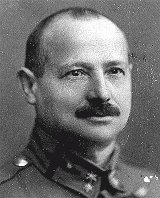
-
Berta Koselova Krakauerova
ID CardBerta was born to a Jewish family. Orphaned when she was a child, she was raised by her Uncle Poldi in Vienna. In 1899 she married Bernard Krakauer, a Jewish businessman from her hometown of Mikulov. As was the custom for orphans, Berta wore a black dress at her wedding. The couple settled in the town of Hodonin, where Bernard opened a dry goods and clothing store. They raised six children. 1933-39: With their children grown, Berta's husband retired in 1938. He sold the business and moved with Berta and…

-
Pawel Wos
ID CardPawel, a Roman Catholic, fled to Danzig, Germany, in 1914 to avoid conscription in the Russian army. Since Germany and Russia were at war, Pawel was arrested by the Germans as an enemy alien and sent to work on a farm in northern Germany. He met Anna Szachowska there, and they married in 1918. The couple moved to Warsaw where they raised 4 children. In 1930 Pawel opened a textile business. 1933-39: Despite the Depression, Pawel's business prospered and they expanded their operations. In 1938 some friends…
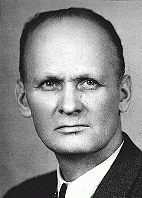
-
Moishe Krol
ID CardMoishe was born to Yiddish-speaking Jewish parents in Radom. The industrial city was known for its armaments factories in which Jews could not work and for its leather industry in which many Jews did. When Moishe was a teenager, he finished school and apprenticed to become a women's tailor. Moishe earned a certificate enabling him to be a licensed tailor and settled down in Radom. 1933-39: By 1939, Moishe had become a master tailor specializing in women's clothes. He remembers local antisemitic…

-
Jocheved Kuzda Kasher
ID CardJocheved, or Jadza as she was called at home, was born in the industrial city of Lodz, Poland's second-largest city. Before the war, one-third of Lodz's inhabitants were Jewish. The Kuzdas kept a traditional Jewish home and placed importance on their children's education. Jocheved had two older sisters, Sarah and Regina. 1933-39: Jocheved was 9 when the war broke out in September 1939. Instead of starting school, she stayed at home listening to the bombs exploding. Her father and sister tried to get to…
-
Erika Eckstut
ArticleExplore Erika Eckstut's biography and learn about the difficulties and dangers she faced in the Czernowitz ghetto.
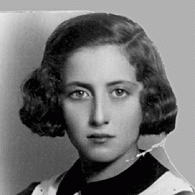
-
Jozef Tiso
ArticleJozef Tiso was a Slovak politician and a Roman Catholic priest. From 1939 to 1945, he was the president of the Slovak Republic, one of Nazi Germany’s allies.
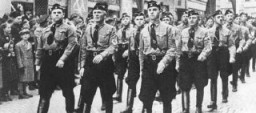
-
Hans Heimann describes Italian aid to Jews
Oral HistoryThe Germans annexed Austria in March 1938. In 1939, Hans fled first to Hungary and then to Italy. He and his parents were interned in various towns. Hans's father became ill and died in 1940. In 1943, Hans and his mother were warned of German plans to deport Jews from Italy to Poland. They moved to smaller towns until liberation by the British in August 1943. Hans worked as an interpreter for the Allies until 1945, when he worked for the American Jewish Joint Distribution Committee and helped resettle…

-
Alisa (Lisa) Nussbaum Derman describes joining the Nekama (Revenge) Jewish partisan unit led by Josef Glazman in the Naroch Forest
Oral HistoryLisa was one of three children born to a religious Jewish family. Following the German occupation of her hometown in 1939, Lisa and her family moved first to Augustow and then to Slonim (in Soviet-occupied eastern Poland). German troops captured Slonim in June 1941, during the invasion of the Soviet Union. In Slonim, the Germans established a ghetto which existed from 1941 to 1942. Lisa eventually escaped from Slonim, and went first to Grodno and then to Vilna, where she joined the resistance movement. She…

-
Dorotka (Dora) Goldstein Roth describes conditions in the Vilna ghetto
Oral HistoryAfter the Germans invaded Poland in 1939, Dora's family fled to Vilna, Lithuania. When the Germans occupied Vilna, Dora's father was shot and the rest of the family was confined in the Vilna ghetto. Dora, her sister, and her mother were deported to the Kaiserwald camp in Latvia and then to the Stutthof concentration camp near Danzig. Her mother and sister perished in Stutthof. Dora herself was shot immediately before liberation, but she survived.
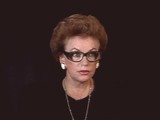
-
Leo Schneiderman describes routine at the Ebensee camp
Oral HistoryThe Germans invaded Poland in September 1939. Leo and his family were confined to a ghetto in Lodz. Leo was forced to work as a tailor in a uniform factory. The Lodz ghetto was liquidated in 1944, and Leo was deported to Auschwitz. He was then sent to the Gross-Rosen camp system for forced labor. As the Soviet army advanced, the prisoners were transferred to the Ebensee camp in Austria. The Ebensee camp was liberated in 1945.
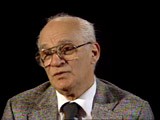
-
Bart Stern describes torture of prisoners during Hanukkah and a subsequent act of resistance to celebrate Hanukkah
Oral HistoryFollowing the German occupation of Hungary in March 1944, Bart was forced into a ghetto established in his home town. From May to July 1944, the Germans deported Jews from Hungary to the Auschwitz killing center in occupied Poland. Bart was deported by cattle car to Auschwitz. At Auschwitz, he was selected to perform forced labor, drilling and digging in a coal mine. As Soviet forces advanced toward the Auschwitz camp in January 1945, the Germans forced most of the prisoners on a death march out of the…

-
Sandor (Shony) Alex Braun describes how music gave him the strength to survive while imprisoned in concentration camps
Oral HistoryShony was born to religious Jewish parents in a small Transylvanian city. He began to learn the violin at age 5. His town was occupied by Hungary in 1940 and by Germany in 1944. In May 1944, he was deported to the Auschwitz camp in Poland. He was transferred to the Natzweiler camp system in France and then to Dachau, where he was liberated by US troops in April 1945. In 1950, he immigrated to the United States, and became a composer and a professional violinist.

-
Leo Melamed describes life as a refugee
Oral HistoryLeo was seven years old when Germany invaded Poland in September 1939. Before the war, Leo's father was a mathematics teacher and member of the Bialystok City Council. Fearing arrest, Leo's father fled Bialystok for Vilna just before the German occupation. Leo and his mother eventually joined his father in Vilna. After the Soviets occupied Vilna, Leo's father obtained transit visas to Japan. The family left Vilna in December 1940, traveled across the Soviet Union on the Trans-Siberian Express, and arrived…
